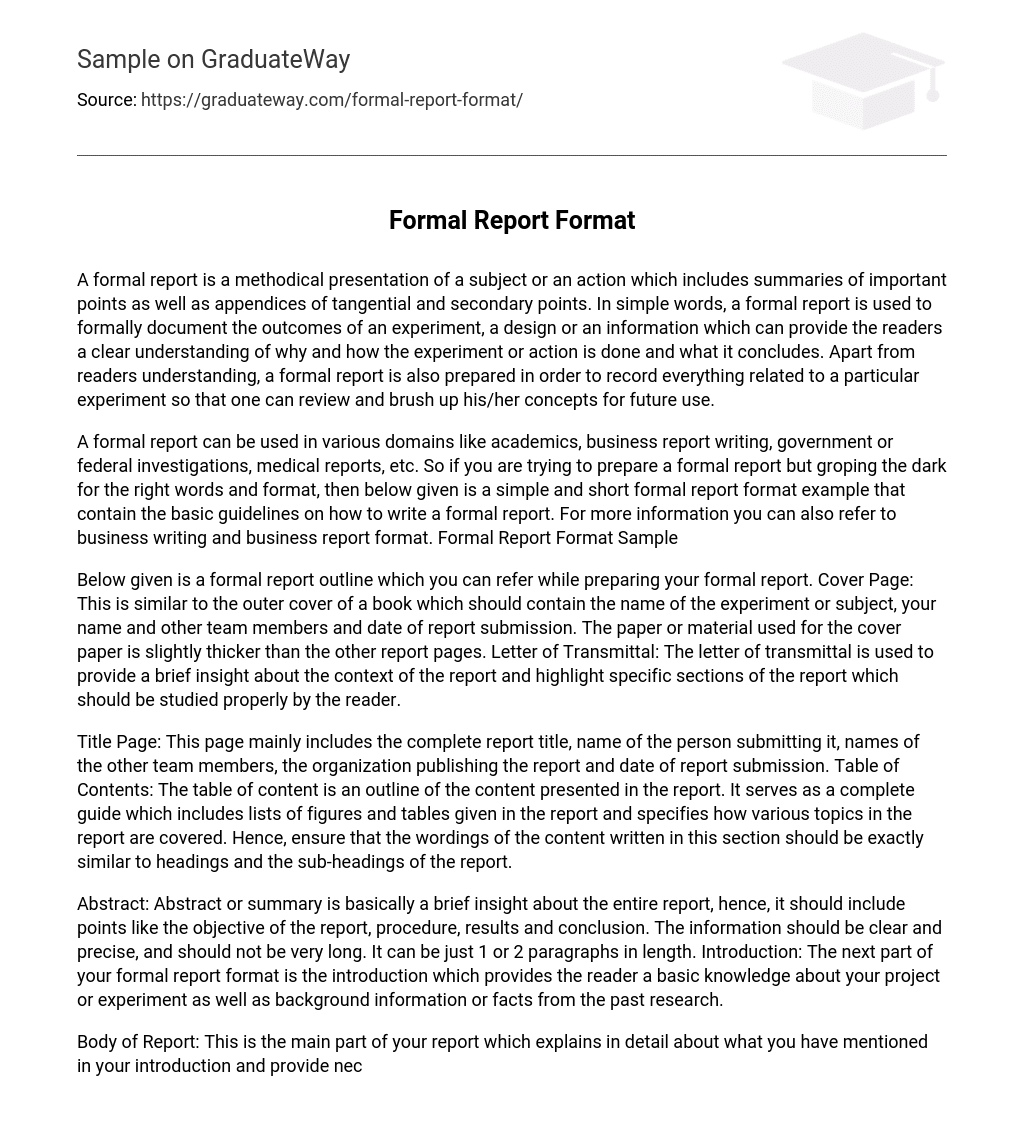A formal report is a structured presentation of a subject or an undertaking. It encompasses concise summaries as well as additional details in the form of appendices. Put simply, a formal report records the outcomes of an experiment, design, or information, offering readers a thorough grasp of the objective, procedure, and findings. Moreover, it acts as a reference for individuals to revisit and strengthen their comprehension of a particular experiment in the future.
In different domains such as academics, business report writing, government or federal investigations, and medical reports, a formal report is often utilized. If you are struggling to find the right words and format for a formal report, the following is a concise and straightforward example of a formal report format that includes basic guidelines. For additional guidance, you can also consult resources on business writing and business report format.
Below is an outline for a formal report that can serve as a guide when developing your own. The outline encompasses the following segments:
- Cover Page: This page, resembling a book cover, should feature the experiment or subject’s name, your name, the names of fellow team members, and the date of submitting the report.
- Letter of Transmittal: This letter delivers a concise summary of the report’s context while highlighting particular sections that require thorough examination by the reader.
The Title Page of the report includes the complete report title, the submitter’s name, team members’ names, the publishing organization, and submission date. The Table of Contents gives an overview and serves as a comprehensive guide for the report’s content, listing included figures and tables and indicating how various topics are covered. It is crucial to use language that corresponds with the headings and subheadings in this section.
The abstract in a formal report format provides a brief overview of the entire report. It includes the report’s objective, procedure, results, and conclusion. The abstract should be concise and clear, typically consisting of 1 or 2 paragraphs. Following the abstract is the introduction, which provides the reader with an understanding of the project or experiment and background information from prior research.
The Body of Report provides in-depth explanations, statistics, research, or information that support the earlier introduced topics. Its aim is to ensure the reader’s full comprehension of the report’s purpose and message.
The Conclusion serves as a recap and presents a concise summary of the work done along with the facts and results obtained in the body of the report.
Your report contains concrete suggestions for future work, derived from your research and conclusion. It is crucial to offer a precise explanation of these recommendations, enabling readers to assess them and draw their own conclusions.
The appendix section of your report encompasses a compilation of resources including books, articles, websites, publications, etc., that have assisted you in your research.
If you are interested in learning more about formal report writing, you can refer to business report templates and sales report templates. The provided formal report template is a simple option that can be utilized for creating reports in academic, business, or any other professional area. It is important to meet the expectations of your readers and employ a writing style that effectively presents your project. Hopefully, the information on formal report format presented in this article will be beneficial to you.





